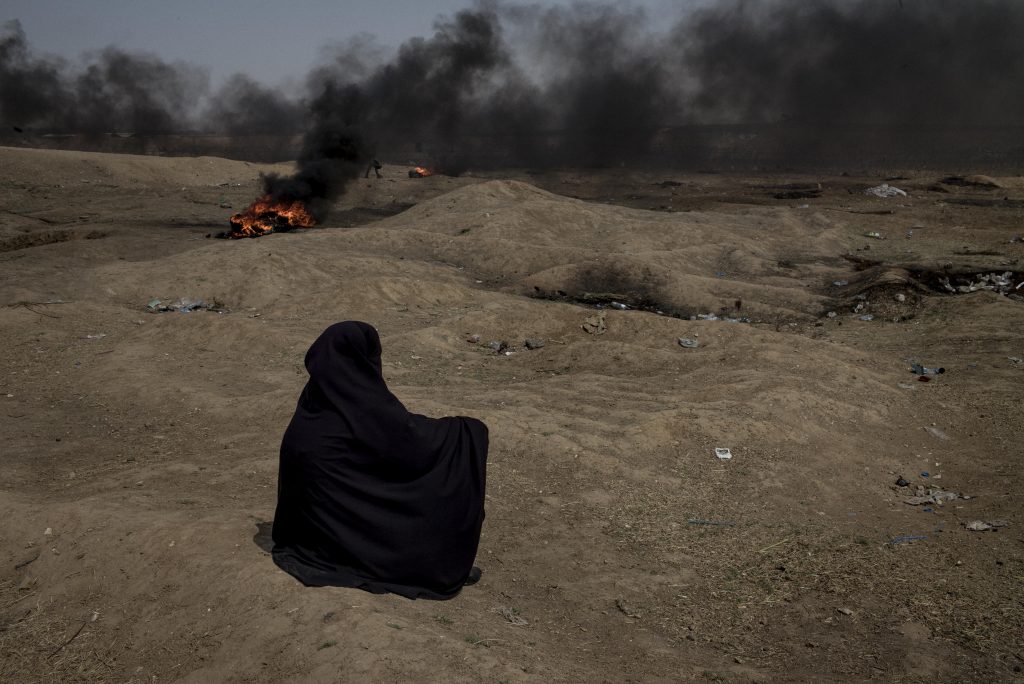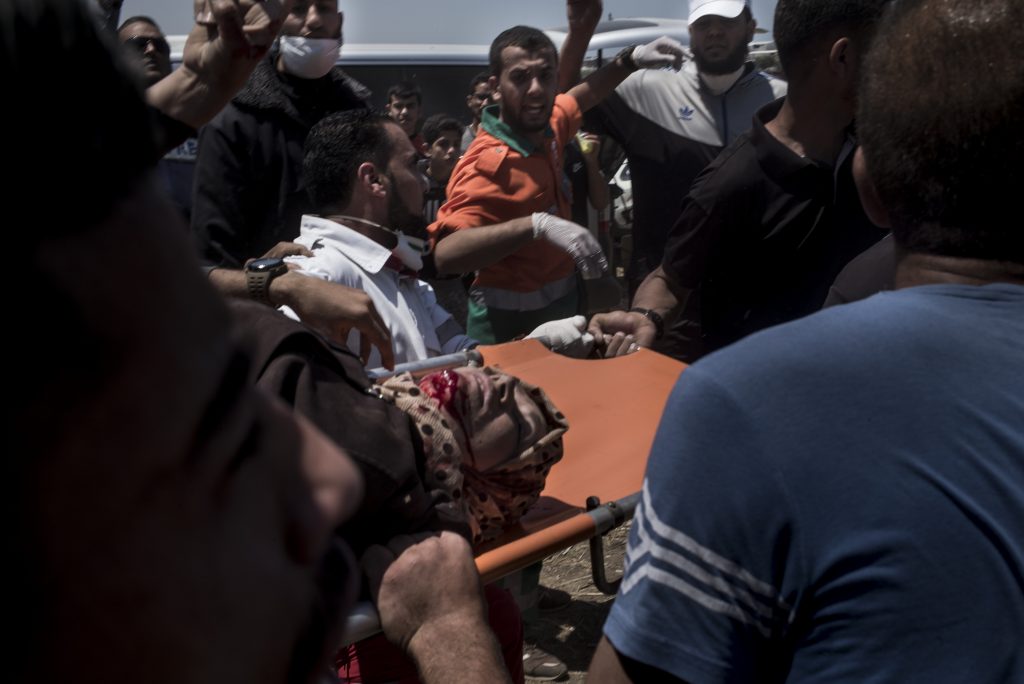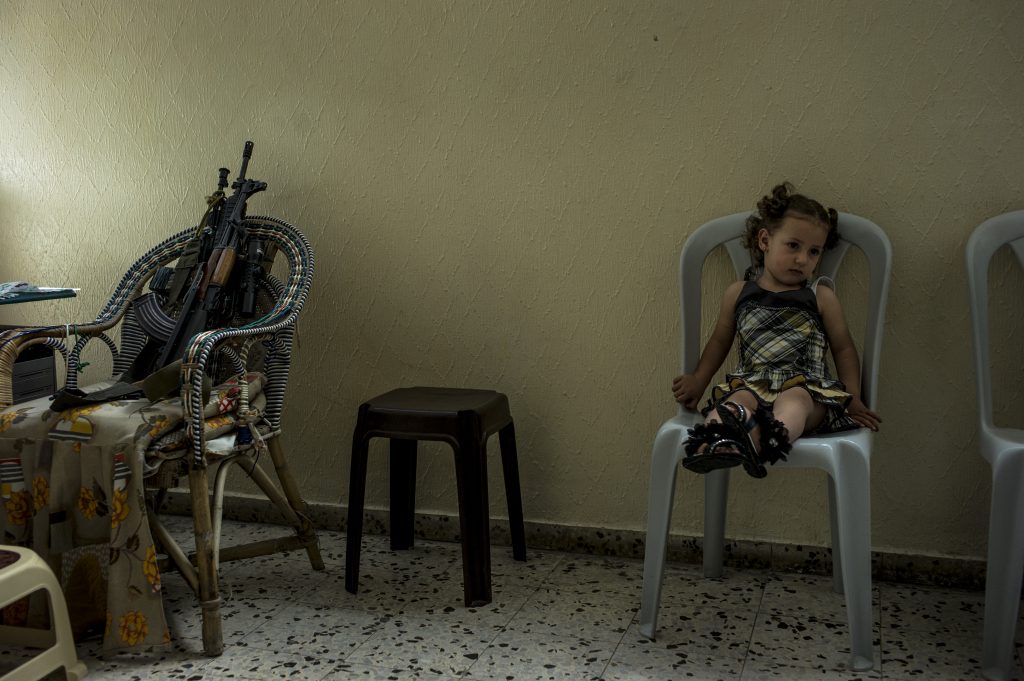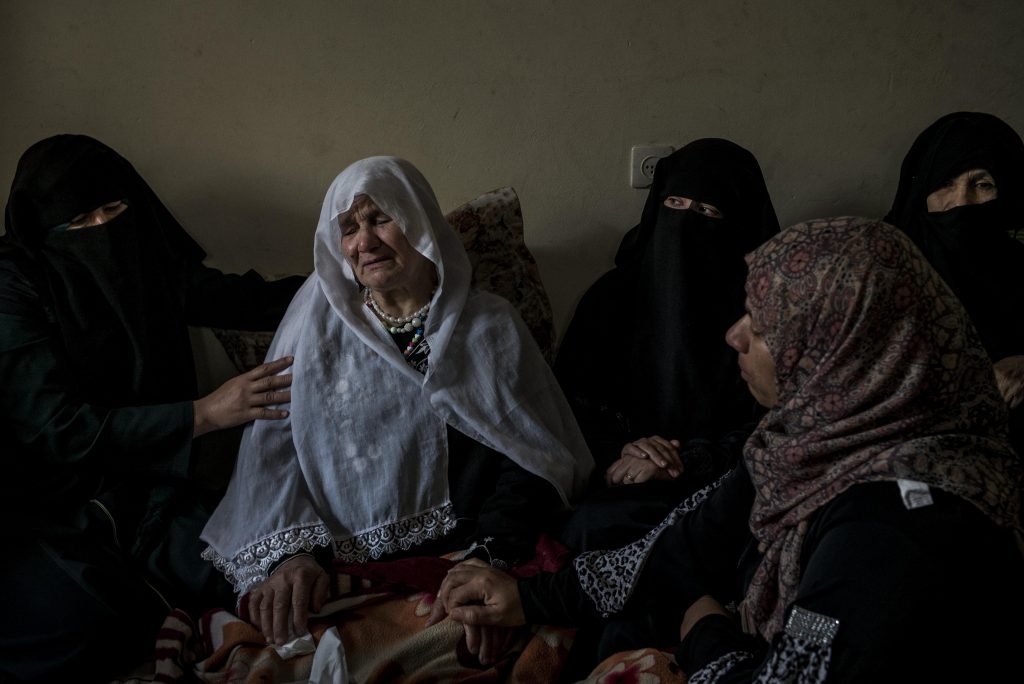by Dario Orlandi
_
Gianluca Panella recently won the first edition of the Romano Cagnoni Photolux Award for photojournalism, dedicated to the memory of the great Italian photojournalist who died last year.
Engaged since 2012 in the documentation of the Israeli-Palestinian conflict (his work on blackouts in Gaza got third prize in the General News category of the World Press Photo 2014), the photographer returned to his rich archive to tell the plight of Palestinian women involved in the conflict with Israel.
Bijanibiha, what is your work about?
Bijanibiha in Arabic means “on her side”, where by “her” I refer to the women on the Gaza Strip. As a male photographer I tried to tell the living conditions of Gaza women, their link with the Palestinian resistance, their position in the strongly religious Arab society, the struggle for the recognition of their rights.

How do women live in Gaza?
For Palestinian women, war is a permanent condition: the conflict is not limited to military action, but continues in a long series of daily material deprivations, in the endurance of grief for the death of loved ones, in the ostracism of a patriarchal society. They fight a silent battle, which is in some ways even harder than that of men, because it is incessant on a moral and material level.
These women carry a unbearable weight. What makes them so strong?
Unlike us Westerners, who see achievements as something individual that must be resolved over the span of a lifetime, these women think in wider terms: since it says in the Scriptures that one day Palestine will be liberated, even if they are afflicted by suffering and deprivation and even if they will not see such liberation, they continue in the pursuit of a greater scheme.

Yours is a re-edition work: photographs taken for other projects over time, that you reassembled. What does it mean for a photographer to return to his archive after some time?
Coming from the world of news, I’m used to thinking about images in their immediacy. A few months ago, however, I started working on a project for a book, Captivity, which talks about the condition of constraint of the inhabitants of the Gaza Strip. It was an opportunity to look at my archive and the idea of Bijanibiha was also born there.
I felt like I was looking at another photographer’s images! Interesting, in some ways, in others frustrating, because you realize how, seven years later, you really are another person. Through this review I understood the photographer that I no longer am, I realized that I do not know what kind of photographer I am now and this is becoming an extraordinary opportunity to go back to shooting and rediscover myself.
More than an editing job, then, a path in search of your inner self…
I think the hardest thing in photography is understanding who you really are, what you want to say and how to say it, even at risk of discovering that you don’t have the answer! A story must be understood, transformed and told; photographing is essentially a work of self-knowledge: when I photograph badly it is because in reality I am not listening to myself.

In this regard, I imagine that having met a great master like Romano Cagnoni was very important.
I met Romano in 2002 during a conference at the Faculty of Political Sciences in Florence. After some time, I went back to see him and it was enlightening: Cagnoni has often worked alongside other famous photographers such as Don McCullin and from this proximity it is easy to see how different individuals interpret the same situation in different ways. For example, while McCullin was predominantly an action photographer, almost a “soldier photographer”, Cagnoni was more passionate about the human condition.
What fascinates you about his authorship in particular?
Poetry and humanity. In Cagnoni’s photos, even the news ones, there is always a component of empathy, humanity, morality. Romano is like a great storyteller: every sentence he writes is full of experience and meaning, you can always find something to learn, to remember.
So what is the relationship with a teacher? Isn’t there a risk that personalities of this depth could become an influence so massive as to limit individual expression?
Back to what I said, from the masters one must not learn the style, but the knowledge they have of themselves. It would be neither possible nor sensible to try to photograph like them; it is rather a matter of photographing as much as they do, trying to have that same intensity, starting from our inner self.

Gianluca Panella | BIJANIBIHA
in cooperation with Fondazione Romano Cagnoni and AFIP International
Chiesa dei Servi
Piazza dei Servi, Lucca
PHOTOLUX FESTIVAL | 16 November – 8 December 2019
Mon – Fry: 3:00 – 7:30 pm
Sat and Sun: 10:00 am – 7:30 pm
All images: © Gianluca Panella
November 12, 2019




